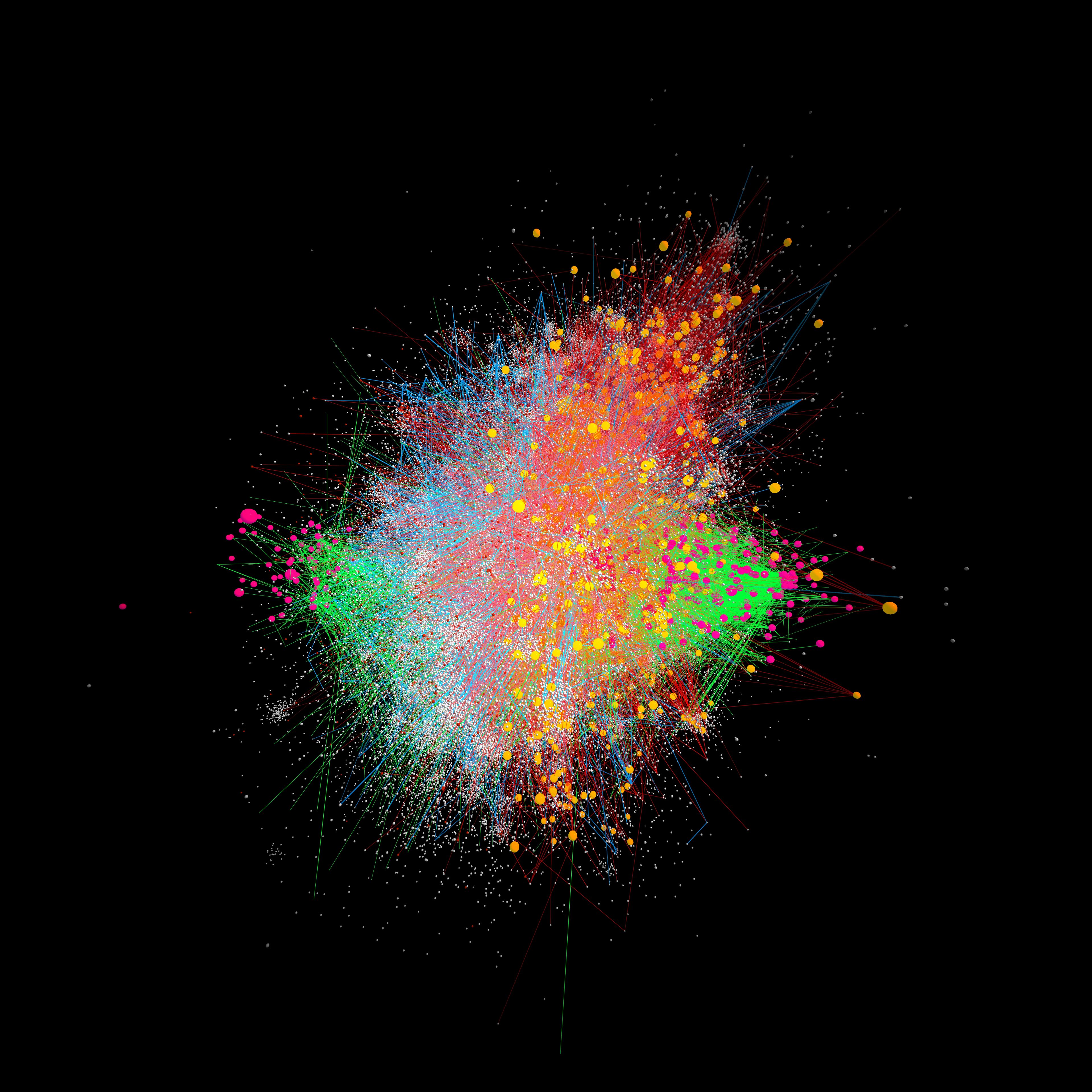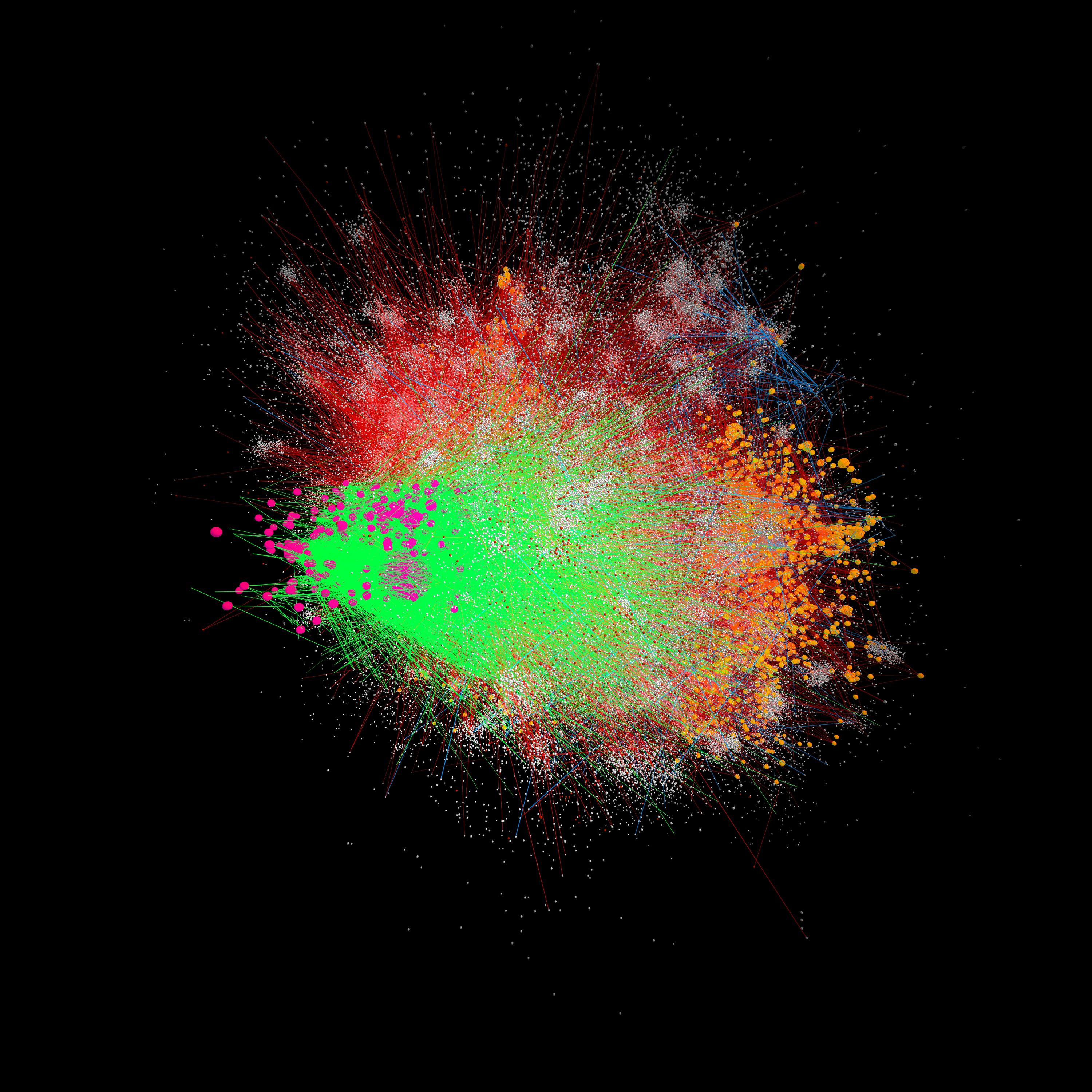BarabásiLab: Fake News Apostles
Fake News forced all of us to question the nature of truth, the role of expertise, creating uncertainties at a moment when clarity was most needed. In Fake News Apostols BarabásiLab brings applies its big data and network science practice to unveil the hidden forces that empowered the spread of fake news during the rollout of the COVID vaccines. Relying on data collected by the Fake News Observatory at the Network Science Institute in Boston, the Lab identified each tweet carrying vaccine-related fake news, reconstructing the follower network of over 200,000 twitter users, identifying 17,000 individuals who actively or unwittingly have helped the spread of fake news related to vaccines. The work brings to front the exceptional role of 12 fake news apostles, that were responsible for about 70% of the fake-news messages. The generative 3d animation highlights the embeddedness of these apostols in the fabric of social media, showing that while small in number, they are inescapable, infecting minds, and exacerbating the death toll of the pandemic.
Credits: A.-L. Barabasi, Gabor Klitzinger, Csaba Both, David Lazer, Dakota Murray, Stefan McCabe, Ben Piazza, Eduard Sik.
SoniLab: Networked Soundscape, reactive electroacoustic sound installation (4-channel audio) for Fake News Apostles.
This reactive installation follows a rigorous electronic score, produced by a generative composition software that mixes the sound material in an infinite combination of possibilities: the score consists of graphs made of an ensemble of nodes connected by directional paths. Each node contains specific information on what sort of gesture the system will perform, and it is executed in response to the motion of the visitors. Once a single graph has been executed, a new graph is generated, making the performance virtually infinite without presenting the same material more than once. Graphs are constructed using a model for the generation of scale-free networks discovered by Barabasi in 1999: the model incorporates two important general concepts, growth and preferential attachment: growth means that the number of nodes in the network increases over time; preferential attachment means that the more connected a node is, the more likely it is to receive new links. Nodes with a higher degree have a stronger ability to grab links added to the network. The resulting topology is fundamental in the analysis of many real networks, and here it is a metaphor of how misinformation spreads within the framework of our social connections.
Credits: SoniLab is the University of North Texas (USA) data sonification laboratory led by Marco Buongiorno Nardelli (creative director and composer), with Garrison Gerard, Christopher Poovey, Patrick Reed, Benjamin Shirey and Okan Yaşarlar (composers and sound designers).


